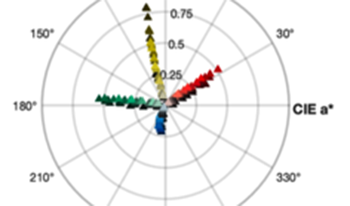
In this paper, we present a computationally-efficient gamut mapping algorithm designed for tone-mapped images, focusing on preserving hue fidelity while providing flexibility to retain either luminance or saturation for visually consistent results. The algorithm operates in both RGB and YUV color spaces, enabling practical implementation in hardware and software for real-time systems. We demonstrate that the proposed method effectively mitigates hue shifts during gamut mapping, offering a computationally viable alternative to more complex methods based on perceptually uniform color spaces.

A single tone curve which is used to globally remap the brightness of each pixel in an image is one of the simplest ways to enhance an image. Tone curves might be the result of individual user edits or from algorithmic processing including in-camera processing pipelines. The precise shape of the tone curve is not strongly constrained other than it is usually limited to increasing functions of brightness. In this paper we constrain the shape further and define a simple tone adjustment, mathematically, to be a tone curve that has either no or one inflexion point. It follows that a complex tone curve is one with more than one inflexion point, visually making the curve appear ‘wiggly’. Empirically, complex tone curves do not seem to be used very often. For any given tone curve we show how the closest simple approximation can be efficiently found. We apply our approximation method to the MIT-Adobe FiveK dataset which comprises 5000 images that are manually tone-edited by 5 experts. For all 25,000 edited images - where some of the tone adjustments are complex - we find that they are all well-approximated by simple tone curve adjustments.

Tone curves are a key feature in any image processing pipeline, and are used to change the pixel values of an input image to find an output image that looks better. Perhaps the most widely deployed tone curve algorithm is Contrast Limited Histogram Equalisation (CLHE). CLHE is an iterative algorithm that tone maps an input image so that the histogram of the output is (approximately) maximally uniform subject to the constraint that the tone curve has bounded slope (neither too large or too small).In this paper, we build upon a neural network framework [1] that was recently developed to deliver CLHE in fewer iterations (each layer in the neural network is analogous to a single iteration of CLHE, but the network has fewer layers than the number of iterations needed by CLHE). The key contribution of this paper is to show that the same network architecture can be used to implement a more complex (and more powerful) tone mapping algorithm. Experiments validate our method.